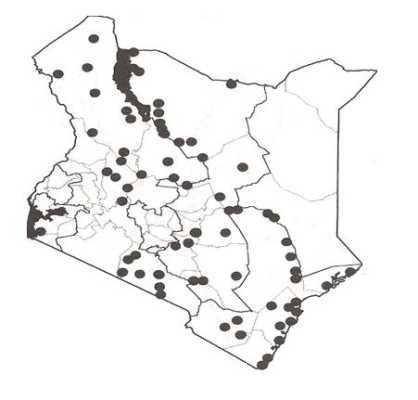Introduction
General Distribution:
 |
| Distribution of A.mellifera in Kenya |
| © Maundu P. and Bo Tengnas. (2005). Useful trees and shrubs for Kenya, World Agroforestry Centre. |
General Information about the Tree:
Biophysical Limits:
It does well in arid and semi-arid areas of Kenya 0 and 1,800 m above sea level. It is drought resistant; tolerates areas with 400 - 900 mm annual rainfall. It thrives in a variety of soils including; gravelly, loam, volcanic and sandy soils. It is found in agro-ecological zones V-VI and in VII along rivers.
Propagation and Tree Management
Products:
1. Food: it produces edible gum
2. Fodder: pods, twigs, leaves and flowers are brawsed by camels and goats,
3. Apiculture: A. mellifera is a good source of nectar.
4. Fuel: The wood is sometimes used for firewood and charcoal but it should not be used for cooking meat, as it leaves a foul taste.
5. Timber: The wood is soft, white and easy to work and is not liable to termite attack.
6. Live fence
7. Dead fence
Services:
1. Shade or shelter: it is planted as shelter belts and windbreaks to protect farm habitation, gardens and orchards.
2. Nitrogen fixation; the tree has the nitrogen fixing ability.
3. Soil conservation; due to the susceptibility of the soils in these areas, this tree plays a vital role of protecting it from erosive agents.
Pests and Diseases
Pest and disease attacks are not a serious problem to this tree and so no information is available about the same.
